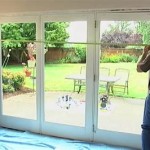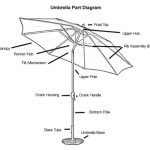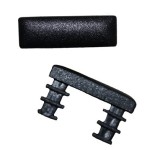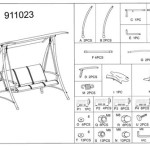DIY Roll-Up Patio Screen: A Guide to Creating a Bug-Free Outdoor Oasis
Enjoy your outdoor space without the unwelcome intrusion of bugs with a DIY roll-up patio screen. Constructing your own roll-up screen provides a cost-effective and customizable way to enjoy a bug-free patio during the warmer months. This article provides a comprehensive guide on creating a DIY roll-up patio screen, outlining the essential steps and considerations for a successful project.
1. Planning and Preparation
The first step in creating a DIY roll-up patio screen is careful planning. Determine the area you want to screen, ensuring it's free of obstacles and readily accessible. Measure the width and height of the area, allowing for sufficient overlap for proper sealing. Consider the desired material for your screen – fiberglass mesh is a common choice for its durability and ventilation. Other factors to consider include the type of mounting system, whether you'll need a track system, and the overall design aesthetic you wish to achieve. Choose materials that complement your existing patio décor and function well in the outdoors. For example, consider using weather-resistant materials for the frame and a durable mesh screen that can withstand the elements.
2. Constructing the Frame
The frame is the foundation of your roll-up patio screen. Depending on the length and height of your screen, you can choose from various framing materials, such as wood, aluminum, or PVC. Wood offers a classic look and is relatively easy to work with, while aluminum and PVC provide greater durability and resistance to moisture. When constructing the frame, ensure that all joints are secure and that the frame is square and level. Use appropriate fasteners and consider adding reinforcing elements for added stability.
3. Installing the Screen
Once the frame is assembled, it's time to install the screen. There are several methods for attaching the screen to the frame, each with its pros and cons. For a more permanent installation, consider using a staple gun or a sewing machine to attach the screen to the frame. For a more flexible option, use Velcro strips or other adhesive-based fastening methods that allow for easier removal and cleaning. When installing the screen, ensure it is taut and free of wrinkles to prevent sagging and maintain maximum effectiveness. Carefully cut the screen to fit the dimensions of the frame, leaving enough slack for a secure fit. Pay attention to the tension of the screen, ensuring it is taut enough to prevent sagging while maintaining proper ventilation.
4. Creating the Roll-Up Mechanism
The heart of a roll-up screen is the mechanism that allows it to be raised and lowered. A simple and effective option is a spring-loaded roller system, which is readily available at home improvement stores. Install the roller at the top of the frame, ensuring it's securely mounted and aligns properly. Then, attach the screen to the roller, making sure it's evenly distributed along its length. For added convenience, consider incorporating a handle or a crank to make raising and lowering the screen easier. Alternatively, you could create a manual roll-up system by using a simple pulley system and a rope. This method requires a bit more effort but can be a cost-effective option for a DIY project.
5. Finishing Touches
Once the screen and roll-up mechanism are in place, add finishing touches to enhance the functionality and aesthetics of your DIY roll-up screen. Consider adding a bottom rail or a weighted bottom strip to keep the screen taut and prevent it from blowing in the wind. Install handles or latches to secure the screen in the down position and prevent accidental unrolling. If desired, you can add decorative elements, such as trim or paint, to match the style of your patio. Finally, test the roll-up mechanism to ensure smooth operation and make any necessary adjustments.
Creating a DIY roll-up patio screen allows you to enjoy your outdoor space without the annoyance of unwanted guests like insects. With a little planning, effort, and the right materials, you can build a custom screen that fits your space and seamlessly blends with your existing patio decor. By following these steps, you can achieve a bug-free and enjoyable outdoor oasis for entertaining guests, relaxing with family, or simply enjoying the fresh air.

Diy Motorized Screens Ontario Screen Doors

Motorized Screens Give Diy Youtuber An Instant Porch Upgrade

Motorized Screens Give Diy Youtuber An Instant Porch Upgrade

Adding Motorized Phantom Screens To Backyard Porch Southern Hospitality

How To Beat The Heat Shade Cloth Roll Up Blind Youtube

How To Build A Diy Canopy Retractable Awning Hgtv

How To Build A Diy Canopy Retractable Awning Hgtv
Installing Retractable Screens Jlc Online

Mosquiteria Retractable Screen Wall System Aluminum Screening Systems

Adding Motorized Phantom Screens To Backyard Porch Southern Hospitality
See Also








